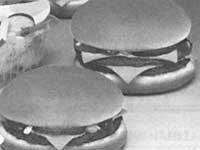Keys to controlling cholesterol
1998/05/01 Agirre, Jabier - Medikua eta OEEko kidea Iturria: Elhuyar aldizkaria

In a society like ours, about 5% of the population has a high level of cholesterol. What raises blood cholesterol? On the one hand, measures food rich in saturated fats or fats, but also genetic reasons. In the following lines we will analyze the keys of cholesterol and the best strategies to control it. To see if we face each other better.
What exactly is cholesterol?
Cholesterol is a special substance in the lipid family, which we normally call fat or fat. In addition to being found in animal foods, it is also found in people's blood and body cells. It is an essential component of bile and also stones or gallstones.
Why is it essential to live?
Because it participates in the formation of cell membranes and internal secretion glands are also necessary for the synthesis of hormones such as sexual or corticona. In addition, without cholesterol, a synthesis of bile acids essential for the digestion and absorption of fats in the intestine cannot be performed. Because of the direct influence of the sun, cholesterol is also essential for the subsequent cultivation of a substance that becomes vitamin 1).
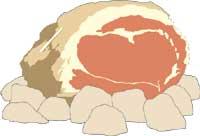
Is the body able to synthesize by itself?
Yes. It is synthesized in the liver and is called endogenous cholesterol. The human liver, with the help of other organs, makes from substances obtained from fats, proteins and carbohydrates. And so, even if food measures are made without cholesterol, there is always a certain level of cholesterol in the blood.
How many types of cholesterol are there?
Two: the above mentioned endogenous cholesterol (which is synthesized in the liver from food) and exogenous cholesterol, as the name suggests, from the outside. They circulate freely in the blood.

Except for egg white, any food of animal origin contains more or less cholesterol. After eating a slice or a plate of fish, for example, cholesterol from these nutrients is absorbed into the intestine and passed into the blood.
How does cholesterol circulate in the blood?
Being a fat that does not dissolve in the blood, it is transported by a series of components called lipoproteins: cholesterol, triglycerides, phospholipids and apoproteins in the composition of lipoproteins.
How many kinds of lipoproteins are in the blood plasma?
One, and they are classified according to their density. High-density lipoprotein (HDL) is called good cholesterol and low-density lipoprotein (LDL) bad cholesterol. When these LDL are left over, because the size of the food is incorrect (excess saturated fat, etc.) or for genetic reasons carry a lot of cholesterol, which can cope, falling into the walls of the arteries.
That's why it's said that cholesterol is bad. For its part, good cholesterol, HDL, collects the cholesterol stored in the blood vessels and takes it to the liver. Its function is to “collect trash”. Facilitating the elimination of harmful LDLs. However, if in the blood there is little HDL and a lot of bad cholesterol (or LDL), the latter accumulates in the arteries and these deposits can grow and form atheroma plaques with the risk of suffering a coronary disease. Therefore, a high level of HDL provides protection against cardiovascular disease.
What is cholesterolemia?
It is the level of cholesterol in the blood. When this level is above parameters considered normal (250 mg cholesterol 100 cm3 in blood. However, some have begun to recommend 200 mg levels as an ideal limit) that person is said to have hypercholesterolemia.
What are the risk factors for cardiovascular disease?
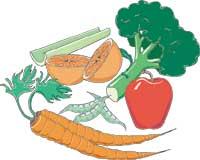
High cholesterol, high saturated fat, high blood pressure, smoking, diabetes, obesity, being a man, stress and family history are the causes of these diseases in most cases. And of them, except for diabetes, male condition and genetic pre-status, the rest of the factors mentioned are related and can be resolved with personal life habits. Prevention is to leave harmful behaviors and adopt favorable habits.
In women, for example, clinical complications of cardiovascular problems appear at age 50, ten to fifteen years later than in men.
And how can these anomalies be solved?
Avoiding overweight, eating properly and exercising. For genetic hypercholesterolemias or other risk factors, special pharmacological treatments must be prescribed and controlled by the doctor.
What food is recommended?

Mediterranean food: vegetables, fruits, meat, fish, olive oil,... All nutrients are necessary and fats (up to a maximum of 30% of daily calories).
Why is it important to eat meat? What meat?
Meat (and also poultry) provides protein, B vitamins, iron, zinc and other minerals. But if possible, red meats should be discarded, since they have an excess of saturated fat.
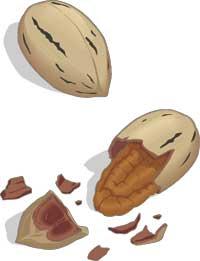
In this order, meats with less fat are chicken, rabbit, turkey, horse and veal. Among us horse meat is not much appreciated, but in other European countries much is consumed. Except for duck and goose, birds in general and turkey and chicken (skinless) in particular have less saturated fat and less cholesterol than red meats. The same goes for rabbit or rabbit meat.
Can you eat autumn? And birthdays?
Pork contains saturated fats, but it also contains a beneficial unsaturated fat: oleic acid. If a pig has grown with acorn, its meat contains more oleic acid. Therefore, the ham can be consumed two or three times a week (or another pig), but removing the visible fat.
Most sausages, on the other hand, and also sausages, are made with total meat fat. Some also have bacon, so they are not recommended. However, read labels because there are low-fat sausages.
Can viscera be consumed?

Keep in mind that 100 g of marrow contain 2,200 mg of cholesterol, and the same number of kidneys 400 mg. Lamb, veal, pork or chicken livers provide 350 mg of cholesterol in the same amount, but they can be consumed once a month because they are rich in iron and vitamins.
What is better blue or white fish?
Blue fish (bonito, verdel, sardines,...) has more kilocalories than white fish (for example, hake or fish), but its fat is not harmful to health, since they are usually fatty acids of the Omega 3 series. As for energy value, overweight people should choose white fish.
However, fish consumption is a dietary habit to maintain and increase, as it has been shown that eating fish is often very good for health. All fish are rich in protein, vitamins, calcium, iron and phosphorus. However, salted cod and other salazons should be consumed in moderation due to their high sodium content.
Is seafood harmful?
It is not yet scientifically demonstrated that the usual consumption of shellfish negatively influences the lipid profile, since in addition to containing cholesterol, shellfish also contains Omega 3 series overacids.
The Spanish Association of Arteriosclerosis considers that shellfish would slightly reduce hypercholesterolemia, so its use is considered appropriate.
Are milk and dairy important?

Yes, because they are rich in proteins such as calcium, phosphorus and vitamins A and D. Dairy products are a source of saturated fats, so it is advisable to consume, at least, skimmed or semi-skimmed, since their nutrients are similar to those of the most complete dairy products. However, there are dairy products prohibited for cholesterol: whole milk, cream or cream, fatty cheeses, ice cream, butter and all its derivatives. For example, although margarines are vegetable fats, in their elaboration transacids are generated (components very similar to saturated ones).
As for cheeses, it should be noted that dry sheep cheeses, for example, contain more fat than the more tender cheeses, since they contain more water.
To summarize this point of dairy products it is recommended to take one or two glasses of skimmed milk a day and fresh or skimmed cheese two or three times a week.
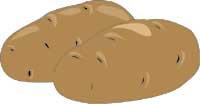
Why should industrial and similar cakes be avoided?
Because they are made with totally harmful and therefore exclusive saturated fats. However, you should always read the labels.
And pizzas, pre-cooked dishes or prepared dishes?
Nor is it recommended. Despite strict health controls (and therefore not harmful to health), they often contain a large amount of saturated fat or hydrogenated vegetable fat.
Are coffee, tea or chocolate harmful? And alcohol, how much can you take a day?
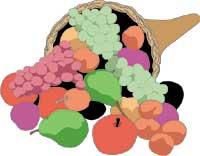
Specialists agree that tea is harmless, coffee has no danger within normal, without abuse. Chocolate contains saturated fatty acids.
Alcohol should be taken in moderation, not exceeding 30 g of alcohol a day.
Does wine have any protective action against cardiovascular disease?
According to recent studies, moderate consumption of wine reduces the risk of cardiovascular disease, as it improves blood clotting and prevents the formation of thrombi. Moderate consumption within the Mediterranean diet (two male semi-forests, one female) reduces the possibility of having a heart attack.
What are hypolipidemic medicines?
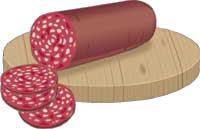
Drugs that reduce the amount of fat (total cholesterol and low-density lipoproteins). Always under medical prescription.
The latest generation drugs, included in the chemical family of statins (lovastine, pravastatin,...) are able to reduce the total cholesterol levels by 20-30% and those of LDL by 30-40%.
In any case, pharmacological treatment should always be supplemented with food, since the diet is irreplaceable.
Are women protected?
Female hormones, estrogens, act at the vascular level delaying the appearance or formation of atheroma plaques in the arterial wall. With menopause, problems are equal in men and women.
Does hypercholesterolemia improve physical exercise?

Exercise reduces the risk of arteriosclerosis, increases the number of HDL and helps reduce the number of triglycerides and LDL. The most important thing is to choose the right exercise according to sex, age, physical condition, etc.
How often should blood lipid levels be controlled?
If there are no problems, every five years. However, if the total cholesterol level is higher than 250 mg/dL (or 200 mg/dL) at a more stringent level in an analysis, the analysis can be repeated according to medical criteria.
How can the average citizen know the level of lipids?
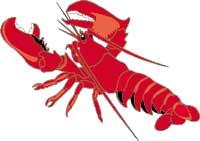
The family doctor, after performing the medical history and the complete medical examination, will order the total cholesterol test (within a more complete blood test) and, if necessary, will instruct the patient to visit a specialist's office.
And what concrete evidence can be requested?
In the general catalogues of Insalud or Osakidetza, which have not yet been approved, diagnostic tests are contemplated, both laboratory and radiology, which can be requested through family physicians. These include total cholesterol or triglycerides.
Types of fatty acids and their sources
Predominant fatty acids |
Saturated |
Unsaturated fat Momounsaturated |
Unsaturated fat Polyunsaturated |
Unsaturated fat Omega 3 |
Where to find them? |
• Palm and coconut oil, whole milk, cream, butter, ice cream, fatty and semi-greasy cheeses, fatty meats, grease spreads, bacon, pastry, cakes, precooked, cocoa... |
• Refined virgin olive oil. Olive. Pomace oil. Azeitunak. Avocado. Hazelnuts. Almonds,... |
• Corn oil, sunflower, soybean and wheat germ, peanuts, nuts, cereals,... |
• Blue fish: verdel, bonito, sardine, salmon, boquerón, tuna, trout, swordfish, chicharro,... |
What cholesteroligo or go down? |
• Above all increase the levels of low-density LDL lipoproteins, that is, RAISE BAD CHOLESTEROL. |
• They can lower the level of bad LDL cholesterol and maintain or even increase the good. Reduce, maintain or raise the bad. |
• They can lower the level of LDL cholesterol, but also the level of good HDL. |
• Tendency to reduce bad cholesterol and triglycerides by flowing blood. Decrease in bad, even triglycerides |
Foods without cholesterol

Egg free pasta is an important source of vitamins, iron, protein and carbohydrates, as well as rich in fiber and without saturated fats.
Both rice and all cereals (wheat, rye, corn, millet) provide polyunsaturated vegetable fats in very small amounts.
Nuts are immediately removed from food, fearing fattening. It is a pity because they contain large amounts of unsaturated fats (that is why the Spanish Association of Arteriosclerosis recommends them).
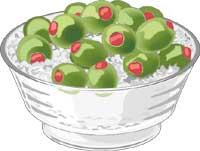
Legumes have a high caloric content, but hardly contain fat. Its characteristics include its richness in folic acid.
Bread, both white and integral, is the basic food of the human being. In addition to containing beneficial substances, it contributes to intestinal functioning.
Potatoes are also a staple food for humans. Its value is found in the richness in starches (starch), iron and vitamins C. They are low in vegetable fat, suitable for boiling, steam or steam and puree, with a little olive oil, to any extent.
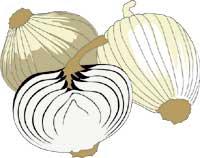
In olive oil predominates oleic acid, monounsaturated fat that is very beneficial in the prevention of cardiovascular diseases.
Garlic, onion, scallions, leek… These vegetables are rich in protein, calcium, potassium, phosphorus, sulfur, iodine, silicon and vitamins (A, B1, B2, B3 and C).
Fruits hardly contain unsaturated fats and vitamins, minerals, physiological waters, fibers, carbohydrates, etc. they give us a lot.
Spinach, carrots, cabbage, lettuce, tomatoes, zucchini, cucumbers, peppers, … All vegetables are easily digested and are of little kilocalorie. In addition, they are an excellent source of vitamins and minerals.

Gai honi buruzko eduki gehiago
Elhuyarrek garatutako teknologia





